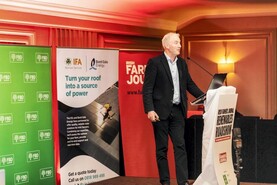Next week, Teagasc Johnstown Castle holds an open day in conjunction with the Irish Farmers Journal on Tuesday 30 August. Farmers will see technologies that will help them improve economic and environmental sustainability on their grassland farms.
Advisers and researchers will be on hand to answer questions and support farmers on the day.
The open day aims to show farmers how they can meet the environmental targets set in order to reduce greenhouse gas and ammonia emissions, improving water quality and reverse the decline in farmland biodiversity. Here is a taster of what will be on show at the open day.
Livestock production systems
Continued improvements in grazing management, breeding efficient animals, reducing the age of slaughter and the use of homegrown feed will lead to further reductions in emissions.
In addition to these proven technologies for improving livestock production systems, newly emerging technologies that reduce emissions further are being tested for Irish systems, such as feed additives for reducing biogenic methane and breeding animals that emit less methane.
Reduce reliance on nitrogen fertiliser
One big challenge is to dramatically reduce reliance on imported, fossil fuel derived fertilisers. New research is showing lower emissions when certain low nitrate compound fertilisers are used and that optimal soil fertility can directly reduce emissions from grassland soils by approximately 40%.
Carbon sequestration
Research is under way to produce country-specific emissions factors for different soil types, land use, land management practices and water table management of peat soils.
This will improve the accuracy of the inventory and quantify a number of technologies to reduce emissions from soils and enhance carbon sequestration. Increasing tree numbers on farms through hedgerow management, on farm forestry and agro-forestry will all increase carbon sequestration and is the subject of new research. Opportunities for carbon farming are also being researched.
Water quality
While Irish water quality is above average within the EU, 53% of Irish waters are at good or high status and thus rapid improvements are needed to achieve the good water quality status by 2027.
There are a large number of technologies available for farmers to control nutrient loss from farmyards and hard-standings, and diffuse losses from fields and farm roadways.
Good nutrient management planning is a major cornerstone to reducing nutrient losses.
Biodiversity
The EU biodiversity strategy aims to have at least 10% of agricultural area under high-diversity landscape features by 2027.
A recent survey of intensively managed farms found that the median wildlife habitat area was 5% (tillage), 6% (intensive beef) and 6.6% (intensive dairying).
There are many ways that farmers can actively improve habitats and wildlife on their farms to achieve the 10% target, including a range of technologies from multi-species swards, hedgerow management, field margins and receive results-based payments for biodiversity. Technologies to meet each of these areas can be seen on the day.






 This is a subscriber-only article
This is a subscriber-only article











SHARING OPTIONS: